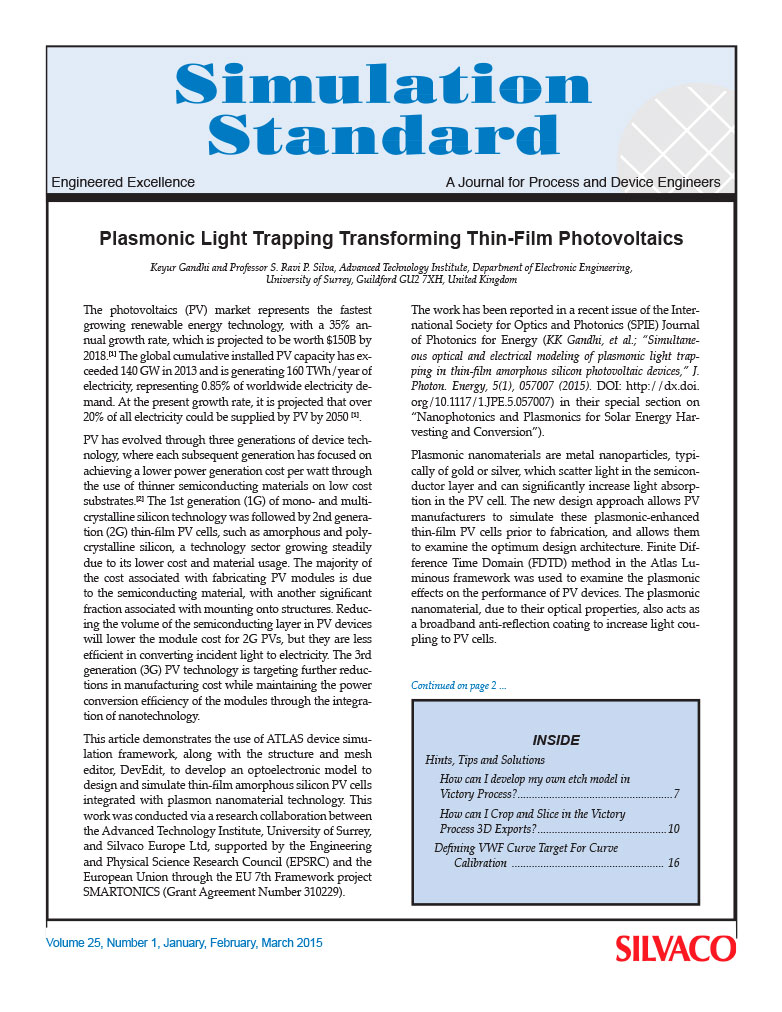Plasmonic Light Trapping Transforming Thin-Film Photovoltaics
Keyur Gandhi and Professor S. Ravi P. Silva, Advanced Technology Institute, Department of Electronic Engineering,
University of Surrey, Guildford GU2 7XH, United Kingdom
The photovoltaics (PV) market represents the fastest growing renewable energy technology, with a 35% annual growth rate, which is projected to be worth $150B by 2018.[1] The global cumulative installed PV capacity has exceeded 140 GW in 2013 and is generating 160 TWh/year of electricity, representing 0.85% of worldwide electricity demand. At the present growth rate, it is projected that over 20% of all electricity could be supplied by PV by 2050[1].
PV has evolved through three generations of device technology, where each subsequent generation has focused on achieving a lower power generation cost per watt through the use of thinner semiconducting materials on low cost substrates.[2] The 1st generation (1G) of mono- and multi-crystalline silicon technology was followed by 2nd generation (2G) thin-film PV cells, such as amorphous and polycrystalline silicon, a technology sector growing steadily due to its lower cost and material usage. The majority of the cost associated with fabricating PV modules is due to the semiconducting material, with another significant fraction associated with mounting onto structures. Reducing the volume of the semiconducting layer in PV devices will lower the module cost for 2G PVs, but they are less efficient in converting incident light to electricity. The 3rd generation (3G) PV technology is targeting further reductions in manufacturing cost while maintaining the power conversion efficiency of the modules through the integration of nanotechnology.



